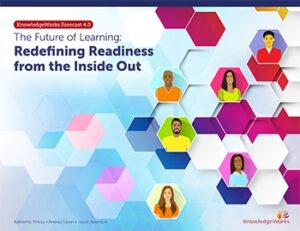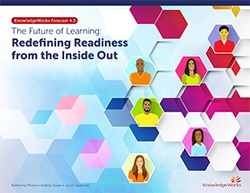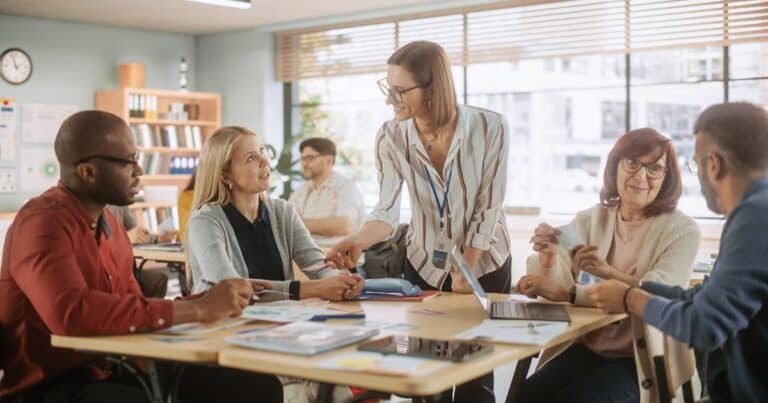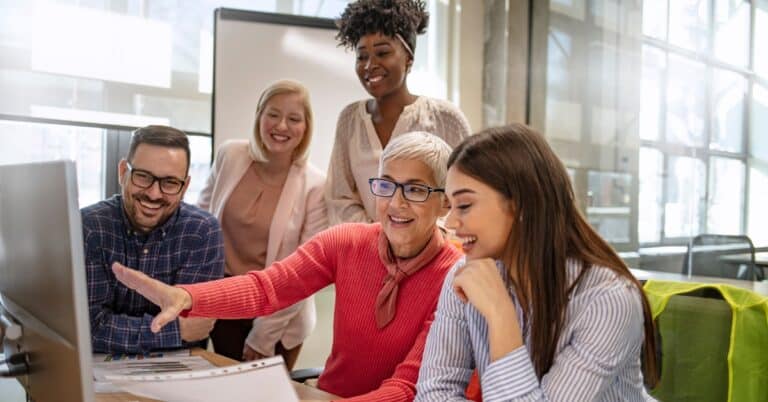An artificial intelligence recently scored a million points in the classic Atari game Ms. Pac-Man using a technique called reinforcement learning. An artificial intelligence has completed a painting considered to be the equivalent of an original Rembrandt. Robotic surgeons such as the Smart Tissue Autonomous Robot have been shown to outperform human surgeons.
These examples might seem like a litany not all that relevant to learning. But they are emblematic of some of the most urgent questions on the horizon for learning: How will people distinguish ourselves in the workplace from and work alongside increasingly smart machines? How might we need to redefine readiness to ensure that all children have a strong foundation for a world of work that we can barely imagine today?
KnowledgeWorks’ latest strategic foresight paper, “The Future of Learning: Redefining Readiness from the Inside Out,” looks to the year 2040 to explore what the changing world of work could mean for how K-12 and postsecondary educators see and cultivate readiness for further learning, work and life.
As artificial intelligence and machine learning become increasingly capable of performing tasks that we once thought were the exclusive purview of people – including many tasks associated with knowledge work – we are going to need to reexamine, if not redefine entirely, the role of people in the workplace. Even as the nature of our contributions is changing and the need to reskill and upskill to stay on the emotive edge becomes increasingly prevalent, the decline of full-time employment will also contribute to new and potentially destabilizing employment structures.
Bolstered by societal supports such as universal basic income, automation efficiency taxes and other mechanisms, many people could by 2040 be electing to pursue work or other productive contributions to their communities that they find meaningful, some of which are paid and some of which are not. Alternatively, we could be working platforms to piece together incomes in a highly taskified economy in which only the highly skilled have stable full-time employment but the need for constant hustle encourages entrepreneurship and pockets of innovation.
These two scenarios from “The Future of Learning: Redefining Readiness from the Inside Out” both reflect employment landscapes in which the rise of smart machines and the decline of full-time employment have displaced many human workers. But in them the societal response differs: the first reflects a coordinated societal response to the changing nature of work, whereas the second reflects a more market-driven or laissez-faire approach. The paper also explore scenarios in which low technological displacement occurs, with new job creation and job reconfiguration outpacing job loss.
Any of these futures could come to pass. In face of such uncertainties, cultivating a new foundation for readiness that focuses on core social-emotional skills along with foundational cognitive and metacognitve practices such as solving problems, thriving in ambiguity and uncertainty and cultivating inclusive communities promises to help learners develop their uniquely human attributes and thereby prepare to thrive no matter what the world of work looks like by 2040.
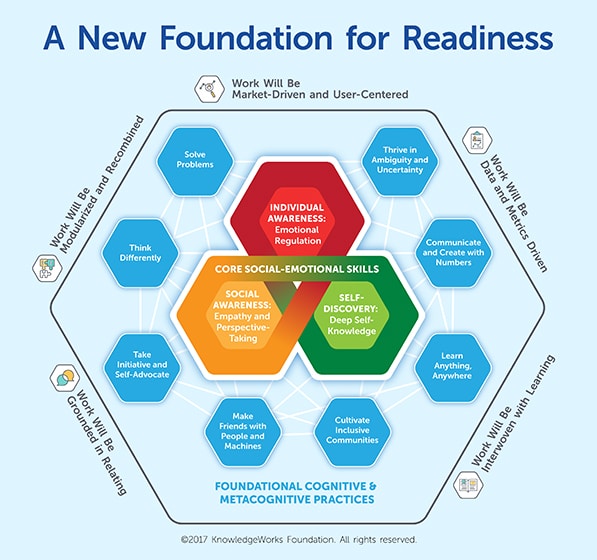
Babies born today will be graduating from college in the year 2040. This new foundation for readiness applies to them, as well as to all of us who will still be working and supporting learners then.
K-12 educators can help cultivate future readiness by integrating skills-based social-emotional curricula across those grades and by supporting students in developing aspirational visions for their lives. Postsecondary educators can help cultivate the new foundation for readiness by integrating support for deep personal development into interdisciplinary programs. They can also develop flexible and diverse pathways and programs that help students develop timely skills along with persistent readiness attributes.
These strategies represent just some opportunities to create a future of readiness in which all students have the opportunity to develop the uniquely human qualities that will distinguish them from and help them work alongside the smart machines that they will meet in future workplaces.
